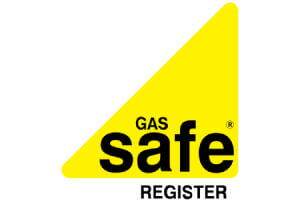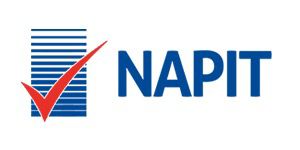
As a property owner, I recently came across a concerning statistic: HMOs are at a higher risk of fire incidents compared to single-family dwellings. Conducting fire risk assessments for HMOs is not just a box to check; it’s a critical step in ensuring the safety of all occupants.
But what factors should be considered when assessing fire risks in these shared living spaces? Let’s explore the nuances of fire risk assessments for HMOs and the implications they have on creating a secure environment for residents.
Legal Requirements for HMO Fire Assessments
In ensuring compliance with fire safety regulations in Houses in Multiple Occupation (HMOs), conducting thorough and regular fire risk assessments is a legal requirement under the Regulatory Reform (Fire Safety) Order 2005.

The assessment process involves meticulous risk identification to pinpoint potential hazards and vulnerabilities within the property. Compliance measures must be implemented to address any deficiencies identified during the assessment, ensuring the safety protocols are up to standard.
The legal implications of non-compliance are severe and may lead to prosecution, emphasizing the critical nature of adhering to these regulations. By following the prescribed assessment guidelines and taking necessary actions promptly, HMO owners can mitigate risks and create a safer living environment for tenants.
Adhering to these legal requirements not only fulfills obligations but also contributes to the overall well-being and security of the occupants, highlighting the importance of maintaining robust fire safety standards within HMOs.
Scope and Enforcement of Assessments
Moving forward from the legal requirements for conducting fire risk assessments in HMOs, the enforcement and scope of these assessments play a critical role in ensuring the safety of occupants and compliance with regulations. Inspection protocols are essential for areas accessible by the public or contractors, covering spaces like boiler rooms, lift shafts and common hallways.
Compliance checks are enforced by the East Sussex Fire and Rescue Service, requiring regular review and declaration for license renewal to maintain safety standards. Enforcement measures are in place to guarantee adherence to assessment criteria, ensuring that assessments are thorough.
Resources for Fire Safety in HMOs
Exploring the available resources for fire safety in HMOs reveals valuable guidance and support for ensuring compliance and enhancing safety measures within these properties. Fire safety resources for HMOs include detailed information on conducting fire drills to prepare occupants for emergencies. They emphasize the importance of well-marked emergency exits for swift evacuations, properly maintained smoke alarms for early fire detection, and strategically placed fire extinguishers for initial fire suppression.
Additionally, these resources stress the necessity of comprehensive evacuation plans tailored to the layout and occupancy of each HMO. By utilizing these resources, property owners and managers can proactively address fire safety concerns, mitigate risks, and protect occupants in the event of a fire. Regularly reviewing and updating these resources ensures that HMOs remain compliant with fire safety regulations and well-prepared for potential emergencies.
Comprehensive Fire Safety Guidance
Transitioning from resources for fire safety in HMOs, a detailed exploration of Comprehensive Fire Safety Guidance provides in-depth insights into crucial measures for ensuring compliance and enhancing safety protocols within these properties. Fire extinguisher placement plays a pivotal role in preparedness, ensuring that these devices are strategically located on each floor and near common areas.
Emergency evacuation plans must be meticulously crafted, considering all possible scenarios and ensuring all occupants are aware of escape routes. Regular smoke alarm testing is imperative, guaranteeing early detection of fires. Conducting fire drill practices regularly sharpens responses and familiarizes residents with evacuation procedures.
Lastly, building evacuation strategies should be comprehensive, addressing different types of HMO structures and the unique challenges they present. By adhering to these aspects of Comprehensive Fire Safety Guidance, property owners can significantly reduce fire risks and create a safer living environment for all residents.
Specialized Guidance for Sleeping Accommodation
In the realm of fire safety within HMOs, delving into the specialized guidance tailored for sleeping accommodation unveils intricate strategies essential for mitigating risks and ensuring resident safety.
When focusing on sleeping accommodation specifics, meticulous risk assessment procedures are imperative to identify potential hazards. Assessment criteria should encompass factors like the number of occupants, layout, escape routes, and fire detection systems. Detailed documentation of these assessments is crucial for compliance and reference.
Implementing tailored fire safety protocols for sleeping areas is vital, considering the increased vulnerability during nighttime hours. Recommendations may include the installation of smoke alarms, fire doors, and emergency lighting.
Ensuring that assessment documentation is comprehensive and up to date is fundamental for meeting regulatory requirements and safeguarding occupants. Overall, a thorough approach to fire risk assessments in sleeping accommodation within HMOs is essential to create a safe living environment for residents.
Responsibility for Assessments in HMOs
Responsibility for conducting fire risk assessments in HMOs typically falls on the property owner, manager, or landlord. It’s the property owner’s legal responsibility to ensure assessments are arranged and completed by a competent person or qualified fire risk assessor. Tenants aren’t responsible for arranging assessments or addressing fire safety concerns.

The assessment frequency is often recommended annually to ensure legal compliance and may vary based on building complexity and size. Professional services specializing in fire risk assessments are available to assist property owners in meeting their obligations. Collaboration between tenants and property owners is crucial for effective fire safety measures.
Frequency and Conduct of Assessments
Moving from the discussion on responsibility for assessments in HMOs, the frequency and conduct of fire risk assessments play a critical role in ensuring compliance and safety within these properties. Assessment intervals in these properties are recommended to be annually reviewed for legal compliance. While there’s no specific legal timeframe mandated for assessments, previous assessors may provide guidance on recommended reassessment intervals.
Conducting regular reviews is essential, especially after fire incidents, property extensions, or equipment changes, to ensure that legal requirements are continuously met. Review procedures must be thorough, including compliance checks to ascertain adherence to safety standards. Incident updates should trigger an immediate assessment review to address any new risks.
Proper documentation of these assessments is crucial for legal purposes, ensuring that all necessary measures are in place to safeguard the property and its occupants.
Penalties for Non-Compliance
Upon non-compliance with fire risk laws in HMOs, severe penalties such as fines, prison sentences, or property management bans can be imposed. Potential consequences of not adhering to fire safety regulations include significant financial penalties, potential incarceration, and restrictions on managing properties. Legal ramifications for non-compliance are outlined in the Housing Act (2004) and the Regulatory Reform (Fire Safety) Order (2005), emphasizing the importance of detailed documentation of assessments.

To prevent such penalties, it’s essential to ensure thorough compliance with industry standards and guidelines. Learning from case studies of past non-compliance incidents can provide valuable insights into prevention strategies. By understanding the severity of these penalties and the stringent measures in place to ensure adherence, property owners and managers can prioritize fire safety in HMOs to avoid legal repercussions and safeguard the well-being of occupants.
Frequently Asked Questions
Can Tenants Be Held Legally Responsible for Fire Safety Breaches in an HMO?
As a tenant, I’m not typically legally responsible for fire safety breaches in an HMO. Legal consequences for non-compliance usually fall on property owners or managers. Shared facilities maintenance, and ensuring vulnerable residents’ safety, are crucial.
Are There Any Specific Fire Safety Requirements for HMOs With Shared Kitchens or Bathrooms?
In shared kitchens and bathrooms, ensuring kitchen safety and addressing bathroom hazards is vital. Shared responsibility in regular maintenance, updated safety measures, and special considerations for vulnerable residents are essential. Legal implications, budget constraints, and immediate actions must align for comprehensive fire safety.
How Can HMO Owners Ensure That Fire Safety Measures Are Maintained and up to Date Between Annual Assessments?
To ensure fire safety between annual assessments, I conduct regular inspections, update emergency plans, schedule training sessions, practice fire drills, and perform maintenance checks. This meticulous approach guarantees ongoing compliance and readiness for any potential risks.
Are There Any Specific Considerations for Fire Safety in HMOs With Vulnerable Residents, Such as the Elderly or Individuals With Disabilities?
When considering fire safety in HMOs with vulnerable residents, like the elderly or those with disabilities, it’s crucial to focus on tailored fire drills, accessible emergency exits, clear evacuation plans, and specialized equipment for their unique needs.
What Steps Should Be Taken if a Fire Safety Issue Is Identified During an Assessment but Cannot Be Immediately Rectified Due to Budget Constraints?
If a fire safety issue is found during an assessment but can’t be fixed immediately due to budget constraints, interim measures and temporary fixes should be implemented to ensure compliance. Long-term solutions should be explored for cost-effective options.
Conclusion
In conclusion, prioritizing fire risk assessments for HMOs is essential for ensuring the safety of tenants and compliance with regulations.
By understanding the legal requirements, utilizing available resources, and fostering tenant responsibilities, we can create a safer living environment for all residents.
Regular assessments, conducted with thoroughness and attention to detail, are key in identifying and mitigating potential fire hazards.
Let’s continue to work together to make fire safety a top priority in HMO properties.
About the Author: LandlordCertificate
Related Posts
Get Social
Recent Posts
- Fire Safety Risk Assessment Complete Guide for Property Owners
- Energy Performance Certificate | A Complete Guide for Landlords
- Fire Safety Check at Home: The Complete Guide for Landlords and Homeowners
- Complete Electrical Installation Condition Report (EICR) Cost Guide for Home Owners and Businesses
- What Is a Commercial EICR and why is It Important













